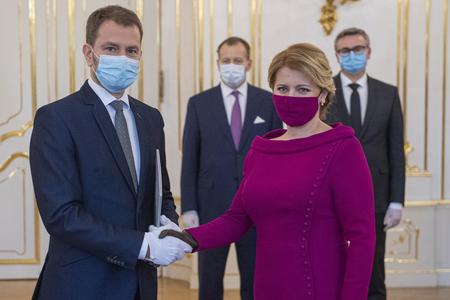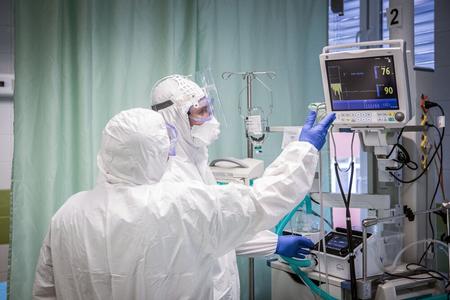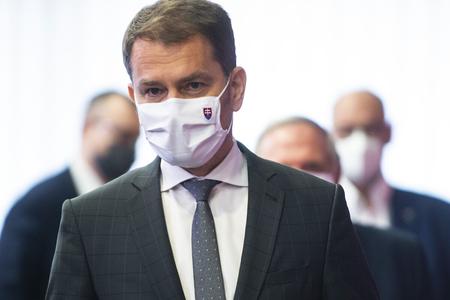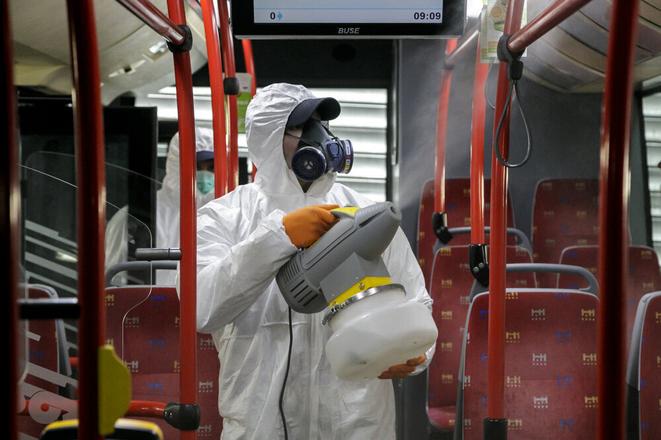Juraj Mesík is a global challenges and risks analyst
With the novel coronavirus pandemic about to enter “season two”, gearing up for a “kill en masse” programme, there is a brief respite to reflect on what has happened and prepare for what has yet to come: in Slovakia, and all Europe, which has so far lost over 125,000 people to an entirely predictable - and predicted - pandemic.

The failure of EU governments to protect the lives of Europe's citizens is nothing short of breathtaking. Yet, the only way political elites process their historic failure is to present thousands of unnecessary deaths in victorious narratives. Most of them can do it easily by turning their eyes to the “America First” and “UK Second” death tolls. But even in the United States, devastated by the epidemic beyond the wildest imagination of America's most hateful enemies, the commander-in-chief is presenting his true believers with his crazy little “epidemic is defeated” victory lap.
What happened in Slovakia
For obvious reasons, neither EU politicians nor the media in German, French, Italian, Spanish or English, are writing about countries that managed to protect their people. Sure, Taiwan and New Zealand, remote islands far, far away, are exceptions richly covered by the European and world press. But not Slovakia, with almost exactly the same infection and death rates as New Zealand, despite being right in the centre of a continent engulfed by the pandemic. Why so?
The answer is utterly and sadly simple: no one needs proof that tens of thousands of deaths in Europe could have been prevented. Yet that is exactly what Slovakia's “COVID-19 miracle” proves.

If Slovaks could have had five deaths per million people by mid-June 2020, the technologically and culturally much more advanced Swedes, Belgians, Dutch, French, Italians, Germans, Swiss, even Britons and Americans, surely could have as well! Instead, they have 20 times (Germany), 70 times (USA), 100 times (Sweden) or 120-times (UK) more victims. That is not what Europe wants to hear. It is much easier to pretend the case does not exist or find comfort believing that Slovak data are bogus.
They are not. There may be minor underreporting of cases and deaths, yet it is probably less than what goes unreported in most other EU countries.
So, what happened in Slovakia? Even many locals have no clue, which provides fertile ground for a range of wild interpretations: there is no pandemic, all the pictures of mass graves and overflooded hospitals in Italy, New York and Brazil are just fake news. Slovakia survived intact because a less lethal strain of coronavirus spread here. The miracle was generated by Catholic priests flying over Slovakia with holy relics, blessing Slovakia and chasing the virus away. It worked so well during medieval plagues – why not in the 21st century? The list of conspiracy theories goes on.
Civil society at work
In fact, the Slovak COVID-19 miracle is fundamentally a result of civil society work. Epidemics are like tumors. If diagnosed and treated early, cancer may become just a minor disturbance in a person's long life. If diagnosed slightly later, they become a deadly drama. Slovaks managed to diagnose the coronavirus pandemic as a mortal threat early on, and act proactively. But those were not politicians, who triggered early response and saved the country – it was civil society. Once they started moving, politicians just followed along.

The men and women who saved the country - many unknown to the public - pushed against a huge reluctance rooted in institutions as much as online memes (it's just a flu! and Just don't panic!).
Eventually, several people in positions of relative power decided to take responsibility and act. Four of them deserve to be named here: Comenius University's School of Medicine Dean Juraj Šteňo, Comenius University Rector Marek Števček, Slovak University of Technology Rector Miroslav Fikar and Bratislava Region Governor Juraj Droba. When they closed universities and secondary schools in the region on March 8, just two days after the first case was diagnosed in Slovakia, they prevented the further spread of the disease from the capital to the rest of the country, and pushed national politicians to act.
There is hope
Slovak politicians holding key posts at that point were not prepared any better than their European counterparts. Research by journalism student Tereza Szalaiová has shown that March 9 was the first mention of the coronavirus by then opposition leader, soon-to-be PM Igor Matovič; while leader of the ruling coalition Freedom and Solidarity (SaS) party, Richard Sulík, mentioned it on March 11; leader of the ruling coalition Sme Rodina party, Boris Kollár, on March 12; and leader of the Za Ľudí coalition party and former president, Andrej Kiska, on March 13. Until then, the coronavirus simply did not reach the minds of people who were to lead the country through the pandemic. Without decisive actions taken by civil society actors, Slovakia would possibly have lost weeks when one day was worth the price of gold. Or, more precisely, human lives.

Could that have been done in other countries of the EU and the world? In many, certainly yes. Is the result sustainable? Maybe.
Victim to their own success in avoiding mass death, Slovaks are gradually becoming less and less careful, paving the road to the next phase of the pandemic. Still, we know much better what needs to be done in order to prevent COVID-19 from spreading and reduce the loss of life now compared to what we knew in February or March. That is our hope for the next months and years.
Author: Juraj Mesík


 Disinfecting the buses in Bratislava on March 9. (source: TASR)
Disinfecting the buses in Bratislava on March 9. (source: TASR)